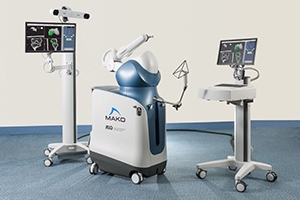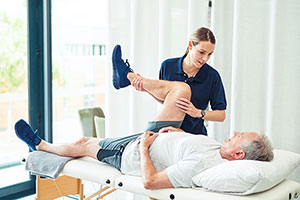As the body’s largest ball-and-socket joint, the hip is designed to withstand wear and tear while supporting your every movement. But while it’s strong and durable, it’s still susceptible to overuse and other injuries that often result in hip pain.
Contrary to popular belief, men and women of all ages can experience hip pain or hip injury. However, athletes and active individuals are particularly prone to developing hip conditions since they regularly engage in physical activities that work the hip joint.
While some cases can be quickly addressed with medication and home treatment, some may require surgical intervention. With this in mind, how do you know if a hip injury is serious? On top of that, what are the common hip and groin injuries in athletes to watch out for, and how can they be treated?
Hip and Groin Injuries in Athletes
Repetitive movements such as running, jumping or biking can lead to hip injuries. When the hips are injured, an individual can experience pain inside the hip or the groin. They may also find it hard or even impossible to perform everyday activities.
With that said, it’s worth mentioning that the muscles in your thighs, lower back and buttocks work together to protect your hip. When injuries occur, they are likely to result from repeated use and strain of the joint and its surrounding muscles.
What Causes Hip Pain?
Hip pain may come from different conditions, such as the following:
Muscle Strain
A muscle strain occurs when a ligament is overstretched or torn. This is a common condition in athletes that happens due to overuse, fatigue, failure to warm up before exercise or improper muscle use.
Low-grade sprains often don’t require special treatment, and simply taking a break from intense physical activities can help relieve hip pain. But if the pain and swelling don’t subside after a few weeks, it’s recommended that you see a hip specialist as soon as possible.
Hip Labral Tear
This is a condition where the cartilage running along the edge of the hip joint socket called labral tears. When this happens, the joint loses lubrication and stability, producing a sharp pain in the hip and groin area. It can also cause weakness, feelings of instability and reduced motion.
Hip Bursitis (Trochanteric Bursitis)
Hip bursitis is when the bursae, or the small fluid-filled sacs reducing friction in the hip joint, become irritated and inflamed. It is typically caused by the repeated overuse of the hips and can produce pain with movement.
Fortunately, simply letting the hips rest can address bursitis symptoms within a few weeks. Moreover, strengthening the legs and back muscles can help prevent future episodes.
Snapping Hip Syndrome
If you hear a popping sound in your hip when you get up from your chair, walk or swing your leg, you may have developed snapping hip syndrome.
Also called dancer’s hip, this condition occurs when a muscle or tendon moves over a bony structure in the hip. While it usually only produces the popping sound or sensation, it may also cause pain or weakness that can interfere with a dancer or athlete’s performance.
Femoroacetabular Impingement (FAI)
Femoroacetabular impingement happens when a bone spur develops on the edge of the hip’s ball-and-socket joint. When this happens, the joint loses mobility and the surrounding tissues become damaged.
FAI is not only a painful condition, but it also increases the risk of osteoarthritis.
Stress Fracture
A stress fracture is a condition common in long-distance runners and athletes with nutritional deficiencies. It’s an injury to the upper neck of the thigh bone that originates from repetitive microtrauma and eventually develops into bone swelling and fracture.
Sports Hernia
Also referred to as athletic pubalgia, sports hernias are soft tissue injuries usually caused by repetitive or explosive twisting and turning motions. This hip condition is common among hockey, soccer, football, rugby and hurdling athletes.
These hip injury symptoms can be treated with anti-inflammatory drugs and physical therapy, but some cases may require surgery.
Hip Arthritis
Hip arthritis is among the most common causes of hip pain, especially in older adults, whether athletes or non-athletes. It’s a condition where the hip joint becomes inflamed and the cartilage cushioning the hip bones degenerate.
People with hip arthritis experience dull pain in the hip, stiffness, reduced range of motion and even pain in the groin area.
Hip Injury Symptoms
Hip and groin injuries in athletes may cause the following symptoms:
- Pain, swelling or bruising in the hips
- Discomfort in the groin, thighs or buttocks
- Joint stiffness and reduced range of motion
- Severe pain
- Inability to walk
With that said, remember that the symptoms you may experience ultimately depend on the underlying hip condition. If you notice that the pain persists or worsens with activity, even with home remedies, it’s best to consult your hip specialist for more effective treatment.
Can Hip Pain Be Serious?
Most of the time, hip pain can be treated with home remedies such as the RICE method (rest, ice, compression, elevation), warm compresses and pain relievers. But how do you know if a hip injury is serious and needs medical attention?
It’s time to see an orthopedic specialist if you experience any of the following:
- Intense pain
- Pain that persists after two weeks of taking painkillers
- Difficulty with daily activities
- Inability to put weight on your hip or the affected leg
- Sudden swelling or a change in the appearance of your hip
Treatment Options for Hip Injuries
During the first appointment, hip specialists usually ask about your symptoms, like how they started and what movements make them feel worse. They may also request medical imaging such as X-rays and MRIs to diagnose your hip condition.
Once they can pinpoint what is causing your hip pain, they may recommend the following treatment options:
- Medication - They may prescribe more potent pain killers or non-steroidal anti-inflammatory drugs (NSAIDs) to help manage the pain.
- Physiotherapy - These are guided exercises and activities to help ease hip stiffness and restore your range of motion.
- Hip Procedures - While not all hip injuries require surgery, hip procedures may be necessary for treating conditions such as labral tears, FAIs and osteoarthritis. Fortunately, today’s technology makes it possible for such surgeries to be done arthroscopically, doing away with the large incisions involved in open procedures.
Get Pain Relief — and Peace of Mind — at the American Hip Institute
How do you know if a hip injury is serious? While we’ve offered some answers to critical questions such as, “What causes hip pain?” and “Can hip pain be serious?” seeking the help of certified orthopedic specialists is still your best option. Consulting with professionals lets you not only enjoy pain relief but also gain peace of mind knowing your hip condition has been properly diagnosed and treated.
The American Hip Institute creates personalized hip care programs for our patients. As the nation’s leader in the innovative treatment of hip pain, you can expect the American Hip Institute to provide you with the best outcomes and patient experience in the world.
Contact us to request an appointment today. We are happy to help you alleviate your pain and restore your hip function so that you can return to the activities that you love.




